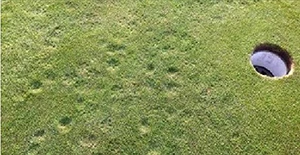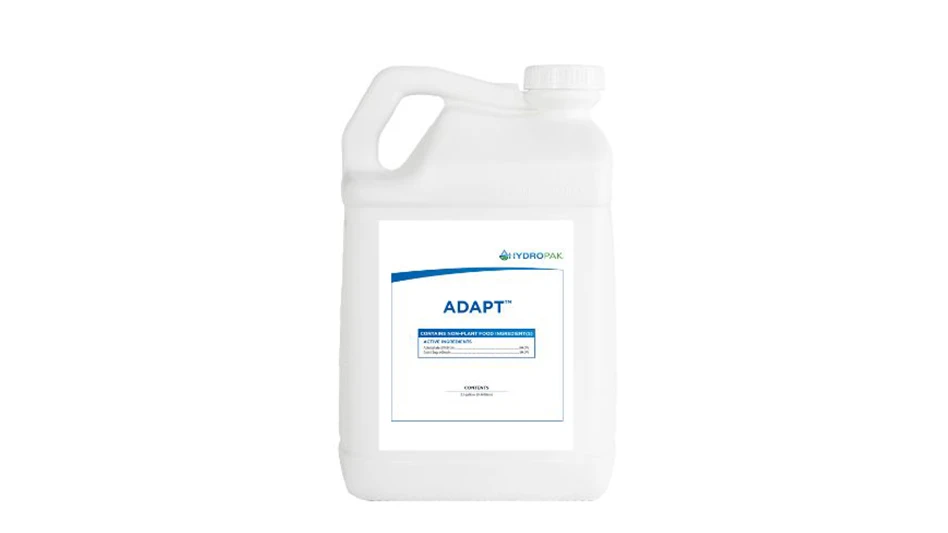
.jpg) |
In January of 2000 at the GCSAA annual conference in New Orleans, Dr. Thomas A. Nikolai stood in front of a crowd of superintendents and bid adieu to metal-studded golf shoes.
The intrusive spikes, which had been ruining putting greens and turf surfaces on courses across the country, had fallen out of favor in the market. Companies announced new, innovative plastic-spiked shoes that would benefit players and superintendents alike, providing increased traction while respecting greens and all the hard work that goes into maintaining them. Nikolai, who is a professor of turfgrass science at Michigan State University, practiced a restrained sense of optimism.
“At the end of the presentation, I stated that the metal spike was gone,” he says, “but I reminded superintendents that new cleat designs were not created equal. Certainly, some of them would result in poor putting quality for golfers.”
More than a decade later, Nikolai began receiving calls from superintendents who had questions and complaints about new shoes that were causing trouble on their courses. Adidas’ adizero Tour and Ecco’s Biom, for example, boasted long-spiked cleat type outsoles that were tearing up greens and creating problems for turf managers.
The trouble with these shoes is simple, says Josh Lewis, superintendent at Chambers Bay in University Place, Wash. “All of the pressure is on the spikes that come out of the outsole," he says. "These hard plastic spikes carry all of the pressure of the shoe. They make deep, lasting impacts on the greens, sometimes even removing turf. Players are walking across the green and they are physically removing grass from the surface. And of course, with hole-location and traffic concentration, they get even worse.”
Nikolai decided to take action. During the 2012 season he conducted greens traffic studies at four different locations across the country. At all four sites the researchers set up 36 individual 3 x 3 foot plots (12 shoe types, three tests per shoe). In random order, each plot and shoe was tested by a Michigan State employee with a designated golf shoe. Traffic was applied by mimicking a golfer pulling a golf ball out from the bottom of the cup after making a putt. At least 20 rounds of golf with a minimum of two individuals were applied to each plot.
For testers, Nikolai used students from the Hancock Turfgrass Research Center, superintendents, golfers, and grounds crew. They rated the impacted plots on the following scale:
1 = Excellent, no visible traffic
2 = Very good
3 = Good, some traffic but I would not mind putting on the surface
4 = Fair
5 = Poor = terrible putting conditions, recommend banning this shoe from the golf course.
Nikolai found that the each shoe type rated about the same across the four sites, evidence to the fact that some spikes are truly worse for turf than others. Still, Nikolai admits, the research isn’t flawless.
“The data represents a worst case scenario in terms of wear from traffic or any of the treatments, considering that we apply at least 20 rounds of traffic in less than 20 minutes,” he says.
But, he adds “all treatments receive traffic in an identical manner, so it’s a worst case scenario for every treatment,” meaning the study still allows golfers and superintendents to identify which shoes are affecting their courses the most. The worst case example, after all, is still an example.
Late last year, Nikolai began receiving feedback about one shoe in particular, the adizero Tour. GCI’s Pat Jones turned to Facebook and Twitter for some direct input from superintendents and received an enormous amount of feedback. Some superintendents are even banning the shoes from their courses. At Chambers Bay, says Lewis, it’s not outside the realm of possibility.
“There has been discussion of adjusting our policies on preferred shoes. We may eliminate some of these shoes altogether,” he says.
Its popularity with golfers, however, could not be denied. Heather Spears, global communications manager for Adidas Golf, says that the shoe was “the best-selling model of golf footwear in all of Adidas Golf’s history,” worn by PGA professionals like Jason Day and Sergio Garcia in addition to countless amateurs around the world.
Nikolai wanted to see just how intrusive this shoe actually was. Last year he conducted another study, nearly identical to the 2012 example, to measure the adizero Tour’s impact alongside other recently released products.
The study was conducted Oct. 30, 2013 on a research putting green maintained at a 0.125 mowing height at the Hancock Turfgrass Research Center at Michigan State University. As in the previous study, all of the golf shoes were trafficked on three different 3 x 3 foot plots with turfgrass industry leaders (golf course superintendents, salesmen, etc) rating each of the 24 total plots for a total of 288 observations. The results were in line with what superintendents had been saying all along: the adizero rated a 4.3 on the 5 point scale, the worst of any of the shoes tested.
What frustrates superintendents as much as the shoe itself is the fact that they aren’t consulted by the companies during the research and development phase.
“There’s no reason these companies can’t call us up and say, ‘Hey, we have a new shoe, we want to see how it affects the greens,’” says Lewis. “There’s obviously zero consideration in the design of how they are impacting putting greens. All they have to do is ask us, and all of this stuff goes away. But they just don’t care.”
Fortunately, Adidas was not blind to the fact that their previous model of the adizero Tour was upsetting a lot of superintendents.
“As a company that takes complaints seriously, we did receive a few last year about the green friendliness of the adizero Tour shoe, and that’s what drove us to improve on this year’s model,” says Spears. “During our design stage, we worked closely with the University of Calgary and our Tour pros to determine needs of the golfer and how to improve on the adizero franchise. “
Launched in January, the new Adidas shoe called the adizero One, promises several improvements for both golfers and turf managers.
“We completely redesigned the shoe with a new outsole, secondary traction, and softer cleats that are more flexible and green friendly,” says Spears. “Thus far we have not received any comments regarding green friendliness.”
Still, it’s important that companies take a more progressive approach to research and development if they want to keep superintendents happy. “We better start speaking up as turf managers now, because this is an obvious trend in shoes,” says Lewis. “We need to be heard more than anything,”
Will Olmstead is GCI's assistant editor.
Latest from Golf Course Industry
- Wonderful Women of Golf 43: Melissa Gugliotti
- This month on Superintendent Radio Network: December 2024
- Mark Hollinger, ASGCA, dies at 70
- Tartan Talks 102: Chad Goetz
- Don’t fly by the seat of your pants
- Golf Construction Conversations: Reed Anderson
- ’Twas the Night Before Christmas (on turf)
- Twas the Night Before Christmas (the turf version audio)





